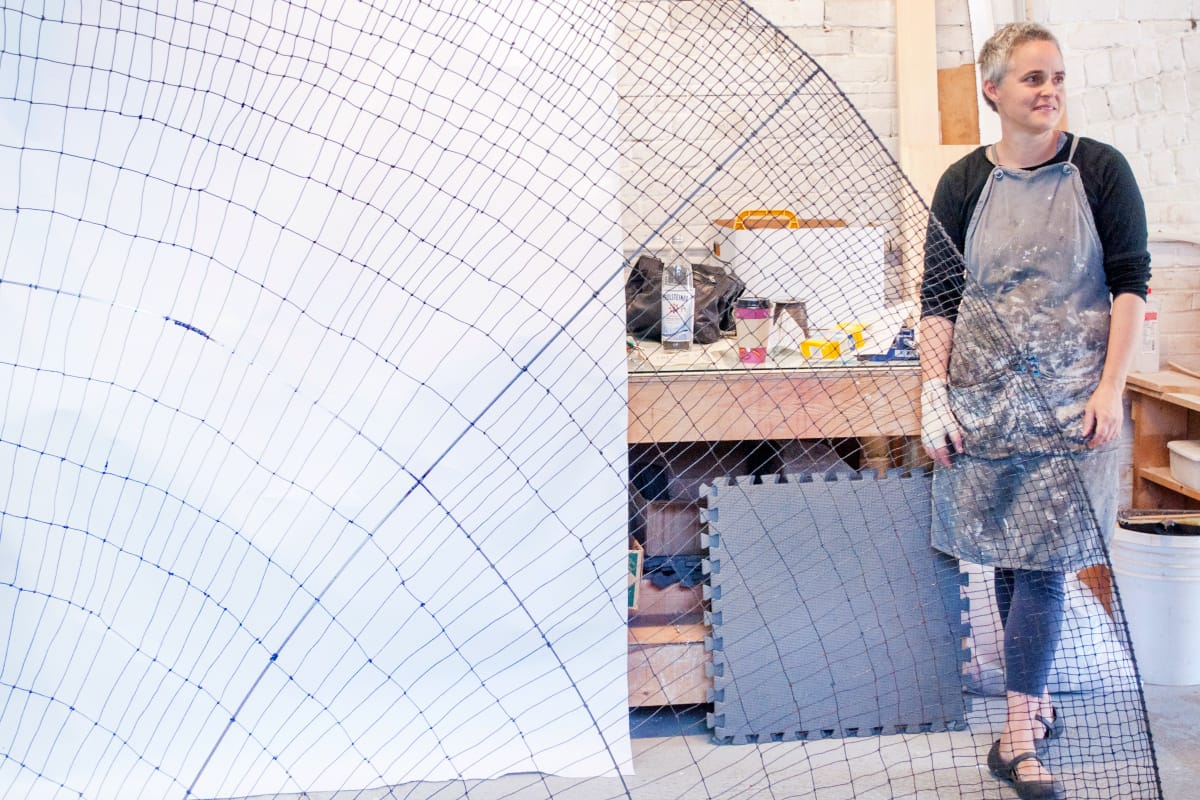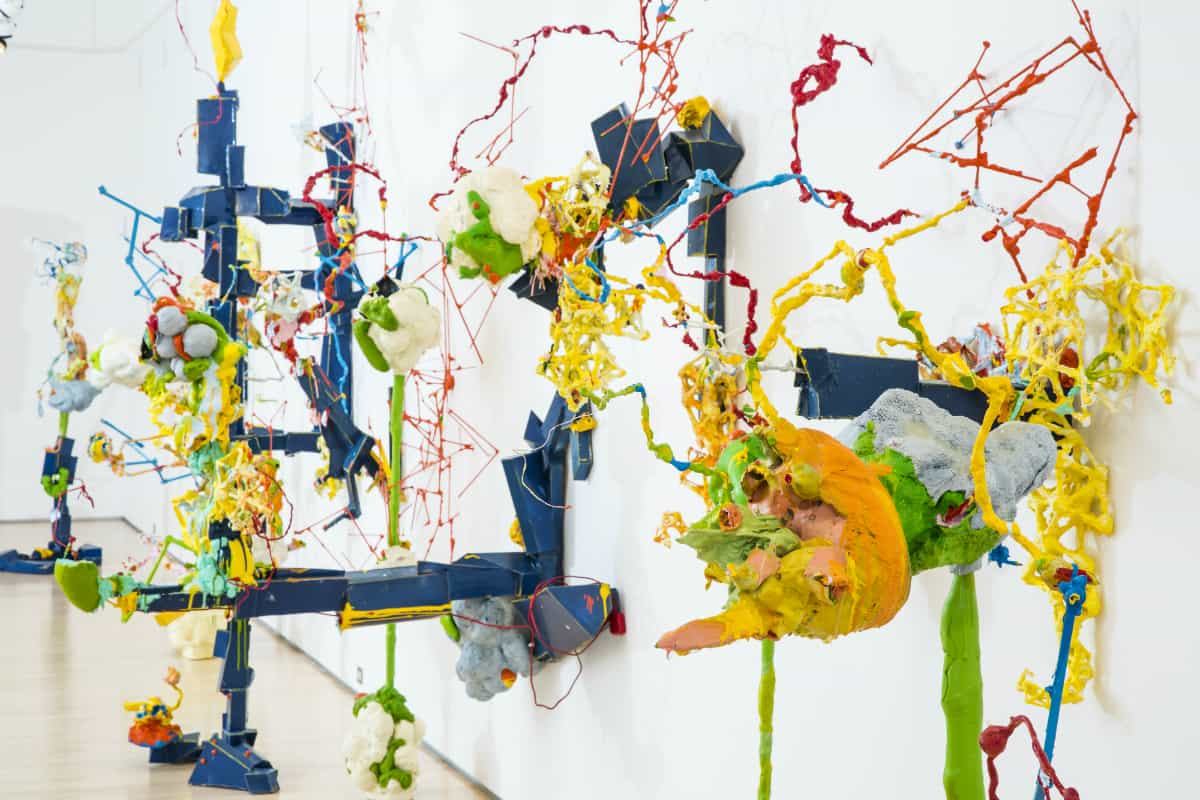From a remote island off the coast of Maine, sculptor Anna Hepler uses solitude and freedom to build her own private universe.
“In the winter when all the trees are bare, you can see Canada from here,” says Anna Hepler as I stare out on a verdant canopy from the second story of her studio in Eastport, Maine. I can just make out the Atlantic shining through the leaves. Perched on a small island just south of the Canadian border, Eastport is the definition of remote. It’s here that one of Maine’s most acclaimed contemporary artists chose to make her home four years ago, seeking out the solitude and freedom that have fueled her creative activity ever since.
Perhaps best known for her massive inflatable sculptures made from recycled plastic that swell and crumple as if breathing, Hepler constructs pieces that are remarkably diverse yet cohesive. For decades, the same collections of imagery—crystalline lattice structures; biomorphic cellular forms; and concentric, tightly spiraling masses—have preoccupied her work in ceramics, crocheted wire, soft sculpture, collage, etching, and virtually any other medium pulled into her creative orbit.
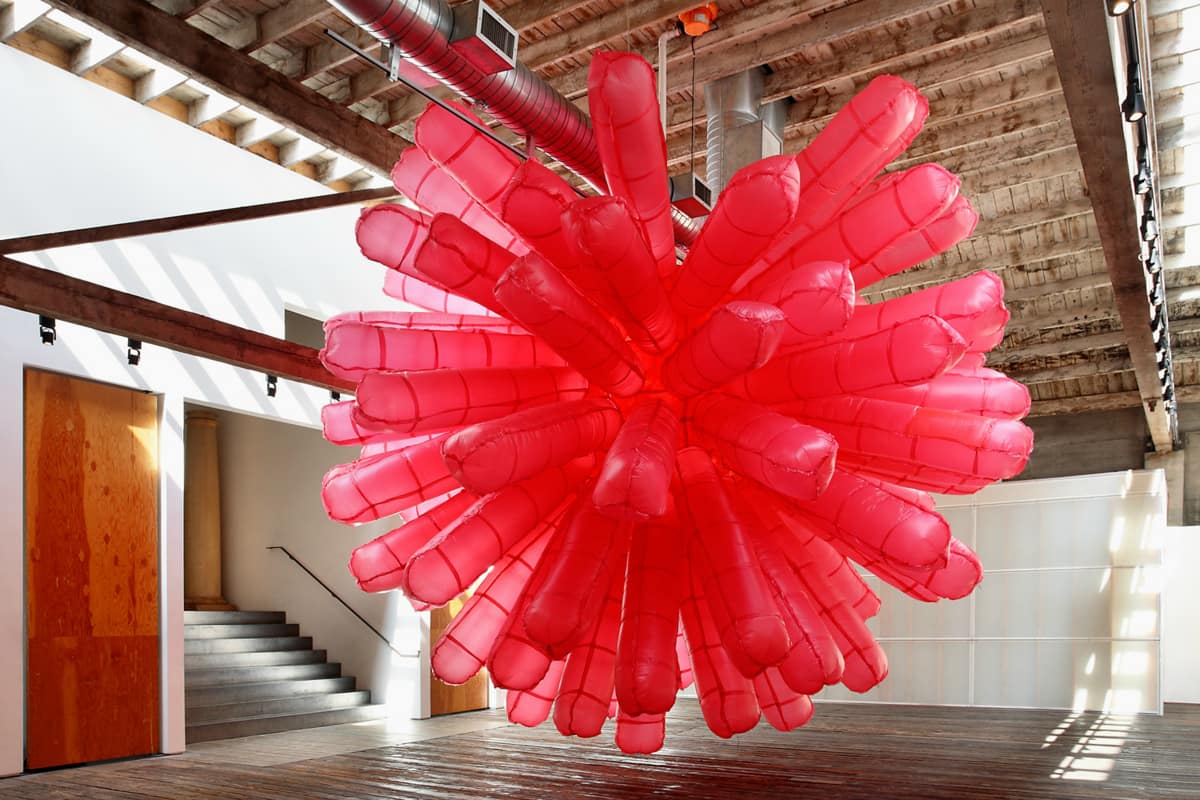
Bloom, photo courtesy of Anna Hepler
I first meet Hepler at the door of her Eastport studio, left open to the midsummer sea breeze. A 45-year-old with close-cropped silver hair, she bristles with energy. She takes a moment to wash the grit from her hands as I survey her workspace: a two-story, concrete-floored building Hepler and her husband refurbished several months ago. She retained her first studio in town—a raw industrial building tucked behind the storefronts along the city’s sleepy waterfront—as a secondary space, the staging ground for her museum-scale installations.
Books and tools line the walls of her studio, which is charged with the energy of constant activity and fresh ideas. An in-process wire sculpture sits on the floor, a portion of a monumental work that fills an entire gallery as part of the 2015 Portland Museum of Art Biennial. A side room reveals a miniature ceramics studio, where she creates dense clay objects in addition to functional pottery when the mood strikes her. The lofted second floor features flat files and a small printing press—“my little bindery,” as she refers to it fondly. Prototypes and works in progress lay scattered across the various stations, ready to be revisited at a moment’s notice.
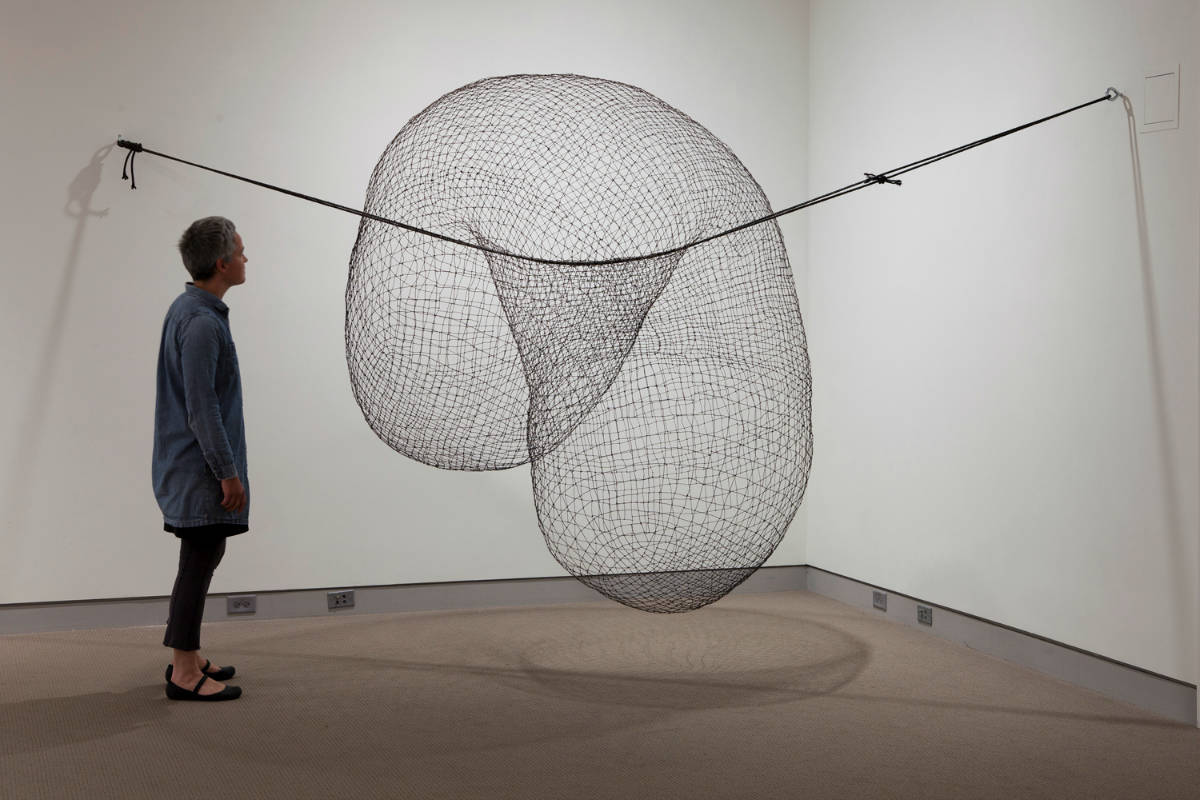
Double Hung from Blind Spot, photo courtesy of Anna Hepler
Despite the evidence of intense focus that suffuses Hepler’s workshop, to her it is a place of refuge. “I prefer to be here whenever I can,” she tells me. “I rebuilt this space very much with eyes off the street, not putting windows in the first floor, turning away and only giving myself a place to look out high overhead. It goes back to the small-town problem: you look out and think, ‘Oh, there goes Billy Boon; what are they doing over there?’ You know everybody, especially in the winter. Living here, the hardest thing is getting your head out from under all of that. I feel that I built the studio very consciously as a private, inward space.”
This sense of interiority is a defining characteristic of Hepler’s work. Her creative world is a private universe, a place where recurring shapes and images—her “elemental forms,” as she calls them—seem to evolve and curl into themselves in a state of continual reinvention. For years she has explored this family of forms and motifs, flattening, stretching, and reconfiguring them in the pursuit of some basic core truth.
In Blind Spot, her recent solo exhibition at the University of Maine Museum of Art in Bangor, Hepler filled the gallery with a constellation of objects and images: large-scale woodblock prints and etchings, a selection of sculptures in wood, matte black ceramics, airy wire sculptures, stitched textiles, and crocheted plastic forms that, for all their difference of scale and media, seem to carry the same essential genetic makeup. Faint allusions to organic life, paired with an intense visual restraint, permeate everything she makes.
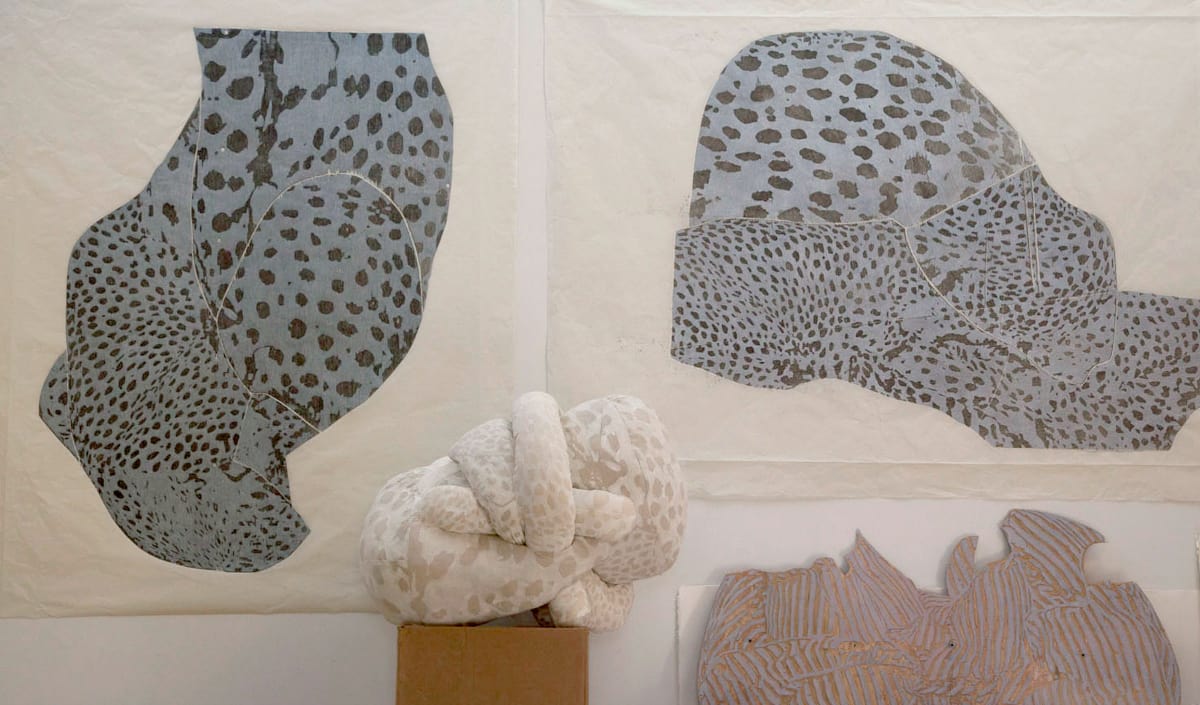
Prints and sculpture from Blind Spot exhibit at University of Maine Museum of Art, photo courtesy of Anna Hepler
The explosion of output found in Blind Spot began with a simple collage. Animal camouflage collected from an issue of National Geographic, cut and layered into biomorphic abstractions, led to abstract prints and sculptures that explore shimmering permutations of creaturely, enigmatic forms, all pattern and volume. The most fascinating work from the series is a sculpture made from wood panels—the original woodblocks from which the prints were made—hinged together into a three-dimensional object, hanging in space like a sort of surreal animal pelt.
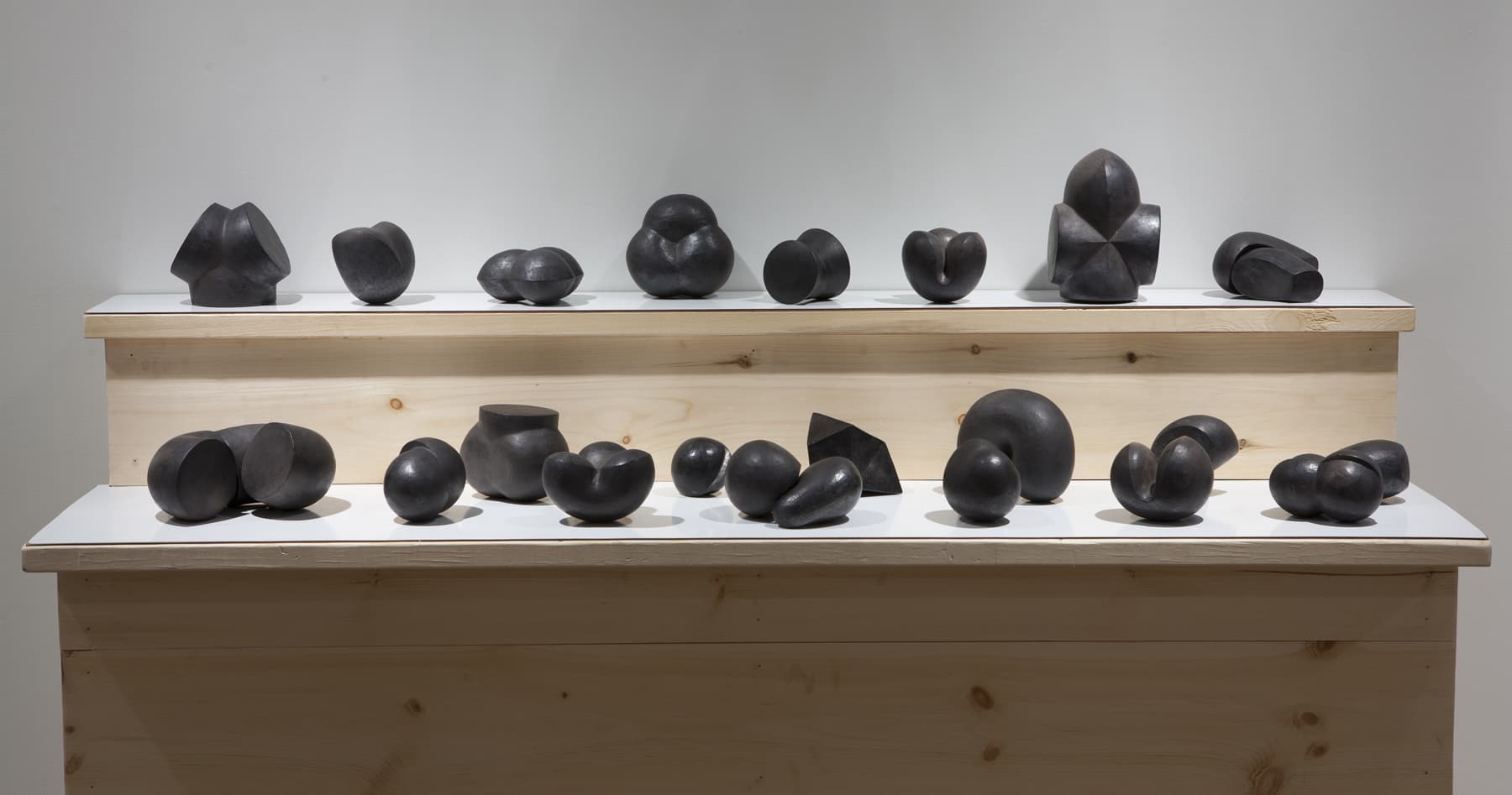
Alphabet installation from BlindSpot exhibit at University of Maine Museum of Art, photo courtesy of Anna Hepler
Blind Spot revealed not only Hepler’s ingenuity across media, but also her prolific rate of output. “You can get a lot done here in the winter,” she says. “There’s not much else to do, as you can imagine.” Before her move to Eastport, Hepler was a professor of art at Bowdoin College in Brunswick, where she became a well-known and much-beloved fixture in Maine’s widely dispersed but tight-knit art community.

